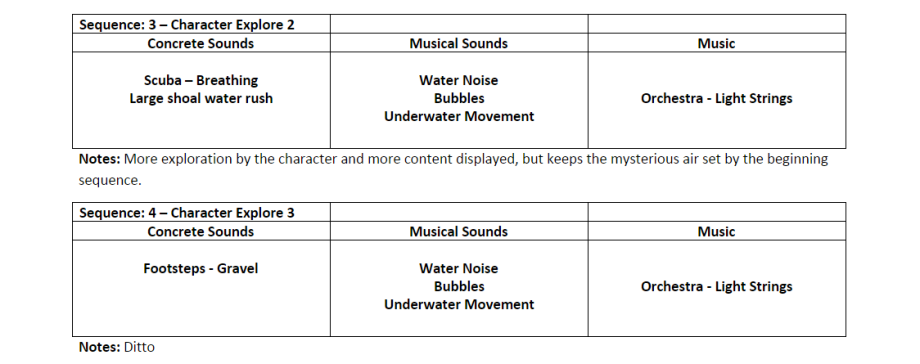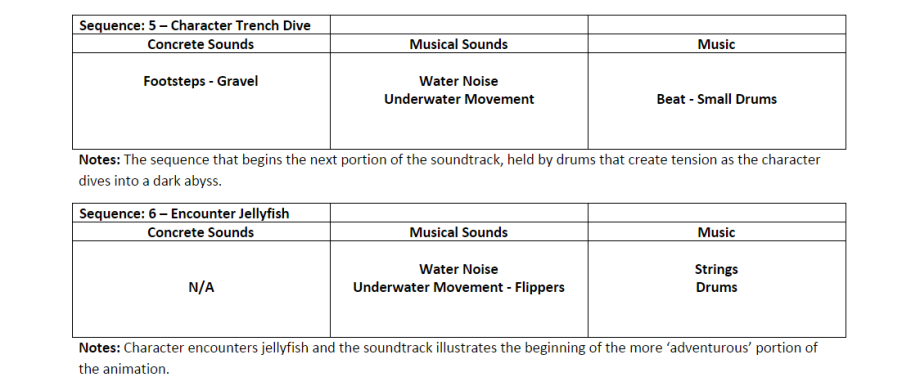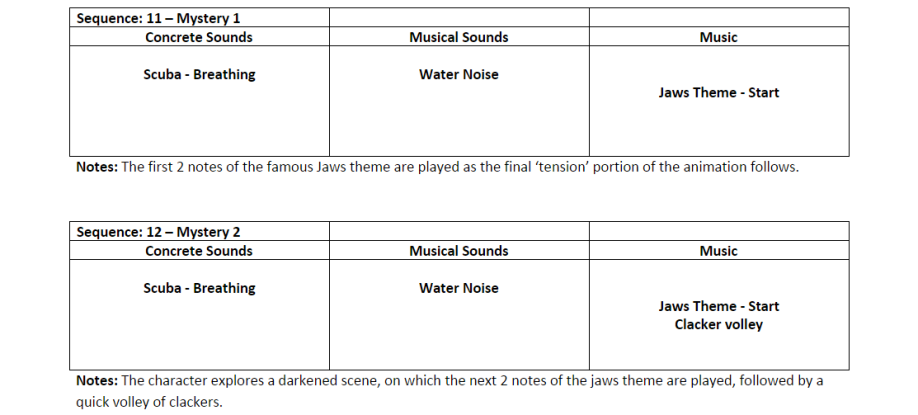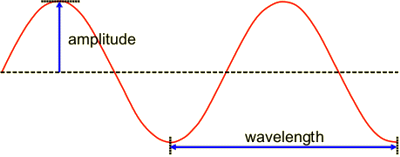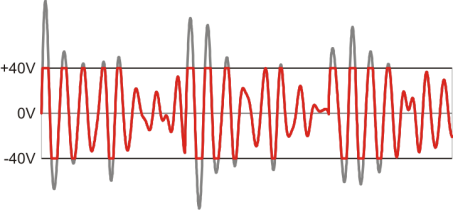Category: Ekow – Sound Design
Sound Production – Conclusion
I’ve never done anything even remotely similar to sound production beforehand, so I was required to learn a variety of new techniques and technical knowledge, which for the most part I found quite enjoyable. However, with this lack of experience I found myself just not hitting the level of quality I had in mind.
Unfortunately due to technical problems, Garageband was not updated with the instruments I required until rather late into the project, leaving me very little time to actually compose my pieces. This fact, coupled with my lack of knowledge, I fear my soundtrack lacks polish and is generally mediocre.
I hadn’t used any (except for 1) MIDI files in my soundtrack simply because anything I could find on the internet wasn’t suit for my purpose. And this didn’t help the development time of 3 whole college days to compose my soundtrack.
I found my iPhone to be surprisingly suitable for recording sound effects. It managed to pick up a lot of small detail sounds and even small sounds in the room next to me, of which I had to edit out. When I came to recording wind and outside sounds such as wind, it proved extremely ineffective. Without the cover of a wind muff, the audio become a white-noise crackling mess, and was thus unsuitable.
The very nature of my animation isn’t very demanding in the way of sound, relying on my soundtrack more than anything. so I wasn’t required to capture anything particularly interesting, and my animation is set underwater which means I ended up heavily editing all muffling all of my sounds, meaning that by themselves they sound awful. Hopefully with the context provided by my animation, my sound effects will seem natural enough.
In conclusion; I found the experience to be quite enjoyable, but my lack of prior experience left me falling short of my expectations. The equipment I used was very suitable (with a few exceptions), and file management and editing process was mostly a breeze.
Sound Asset Creation
All sounds and sound effects I created can be found here, while the sounds I downloaded can be found on my profile (I could not find a way to add them to the main playlist)
Soundtrack
The soundtrack creation was perhaps the most difficult part of the course so far. With near no-prior knowledge of musical composing, I had to take a random approach- hitting notes in different orders and finding sequences that sounded good enough for me to use.
In the end, I ended up with something that almost sounded like a cohesive melody;

I mainly used strings to get the main part of the track, and then laid drum beats and base lines beneath and slowly built up the composition.
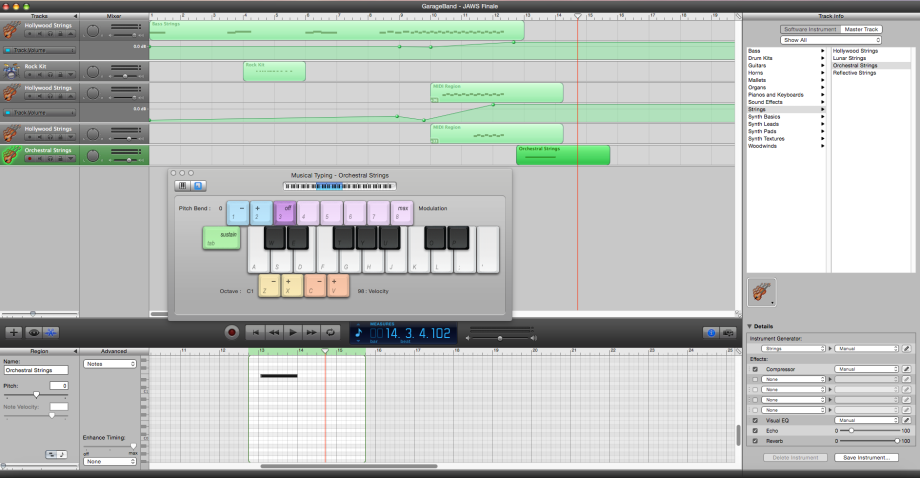
I only used a MIDI file for a single piece, and that was OST – Finale. I couldn’t seem to get the famous ‘Jaws’ tune right no matter how much I tried, so I eventually found myself downloading the tune from midiworld.com
At this point I was using volume control to fade in/out certain instruments. I found this especially helpful when using the strings, to help them sound more fluid. The other pieces (OST – Adventure and Peaceful) were composed using much the same methods.
The final part was to save them and choose a file format. I instantly knew what format I wanted to use, the .MP3 lossy format. Through degraded slightly in quality, MP3 is widely accepted by almost all programs that incorporate audio.
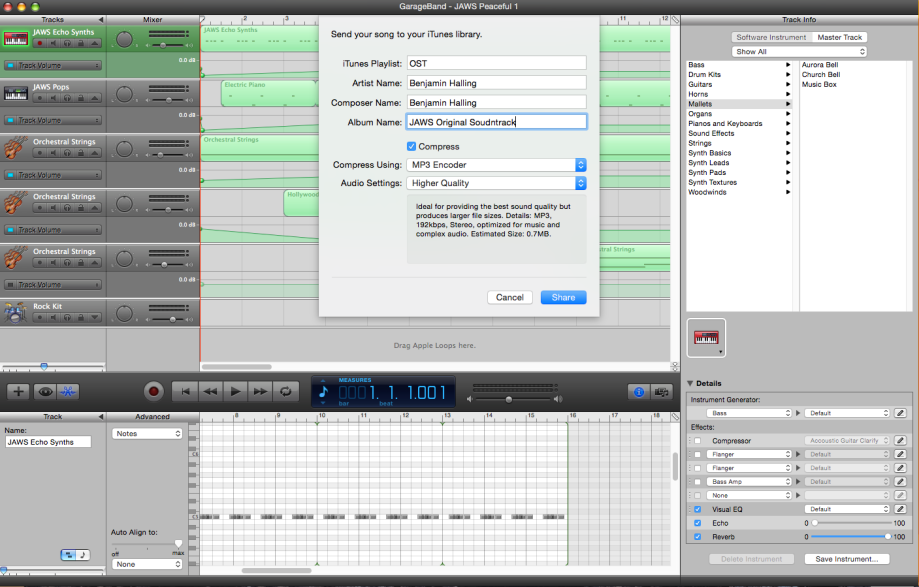
Here you can also see a few custom sounds I edited through Garageband. I found myself needing some oddly specific sounding instruments, I found them through playing around with various sliders and adding different effects. I subsequently named and saved my new creations so I could carry them over to any new composition, should I need them.
Sound Effects
The more practical side of the task demanded that I think carefully about what sounds I needed, and more importantly what sounds were possible for me to create. I instantly ruled out the possibility of getting recordings of Humpback Whale song and angry Tiger roars, so I was forced to download those from the internet, and further edit them myself. The rest of the sounds I needed were well within my reach however; I used simple techniques and a few edits with Adobe Audition to create my final sound effects.
AUDIO LOG
The nature of my animation didn’t demand any truly dramatic sounds, as I plan on my soundtrack and visuals to carry most of the weight. My animation will also be completely void of dialogue.
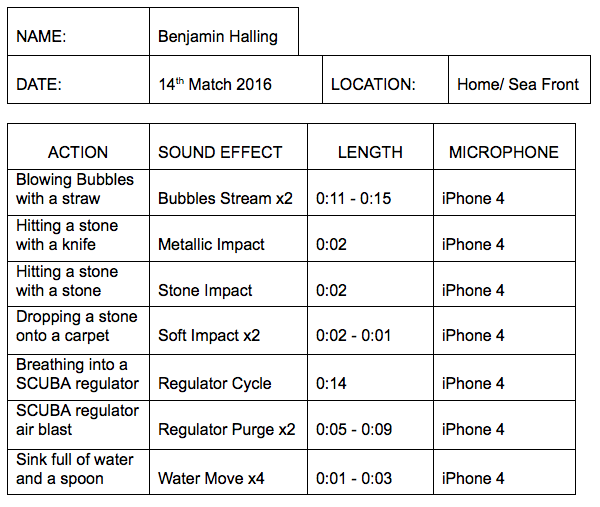
Saving and Recording Process
I used my iPhone 4 to record all of my current sounds. I found it suprisingly good at picking up even the most minute sounds.
The app I used was surprisingly good too, allowing me to name and organise my sounds within my phone, making them very easy to then recognise and use in other applications.
It also allowed me to upload my sounds directly to Google Drive.

Sound Production
Bubbles Stream
Very basic indeed. Blowing air into a bowl filled with water sounds silly, but it provided me with what I needed.
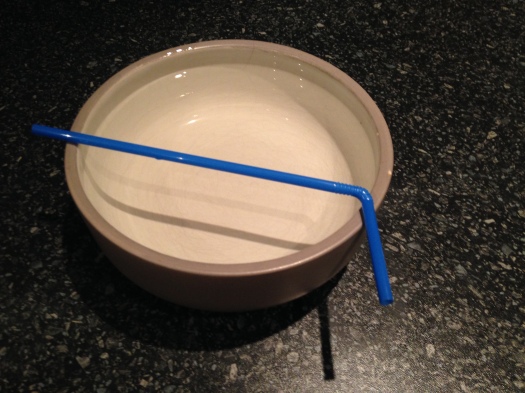


I tried producing bubbles at different elevations inside the bowl, and that provided me with some different sounds and tones.
Metallic Impact/Soft Impact
The first sound I created were simple impact sounds. And the way I created them was as simple as sound production gets;
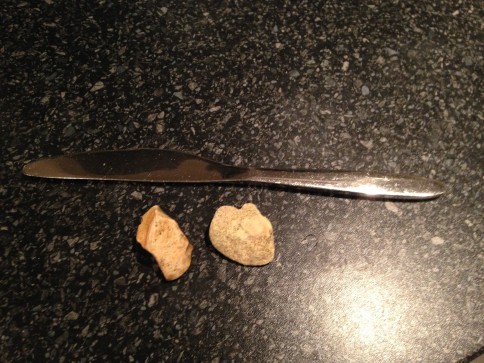
Simply hitting a stone with a knife at different angles until I got a desired sound. I also used the same rocks to get the soft impacts by dropping them onto a carpet. I felt this didn’t even warrant a photograph.


Regulator Cycle/Blast
This sound would have been very hard to obtain/re-create had I not already owned SCUBA equipment, so I felt lucky on this one.

These are the ‘Regulators’, or the mouthpieces of the SCUBA gear. They can produce a variety of hissings and wheezing sounds, but what I needed most importantly was the familiar breathing cycle always associated with underwater exploration.


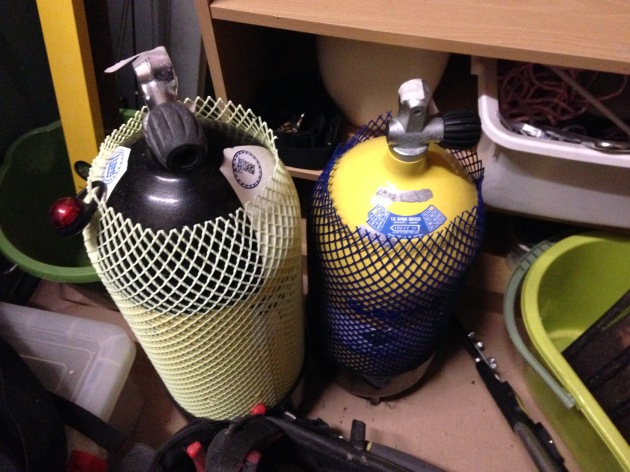
Plenty of air to go around meant I could get some powerful air blasts, though I found that it clipped the audio too much and ended up having to using a more delicate sound.


Water Movement
I wanted to the gentle wish-wash of water to emphasise movement within my animation, and I felt that a sink filled with water and a wooden spoon provided what I needed. It’s really nothing special.

Sound Editing
With all of my sounds, a certain amount of editing needed to be made to have them suitable for my animation. Again, the techniques and processes are relatively simple.
I managed to pull multiple sounds from the initial, individual sounds I created. I plan to make more advanced sounds using these techniques.

Cropping is the basic part of sound production. Trimming away at unwanted portions of recordings helps make them more neat and concise. It can also be used to surgically remove small portions of unwanted sound from your piece, something I found came in handy when editing the water splashes.
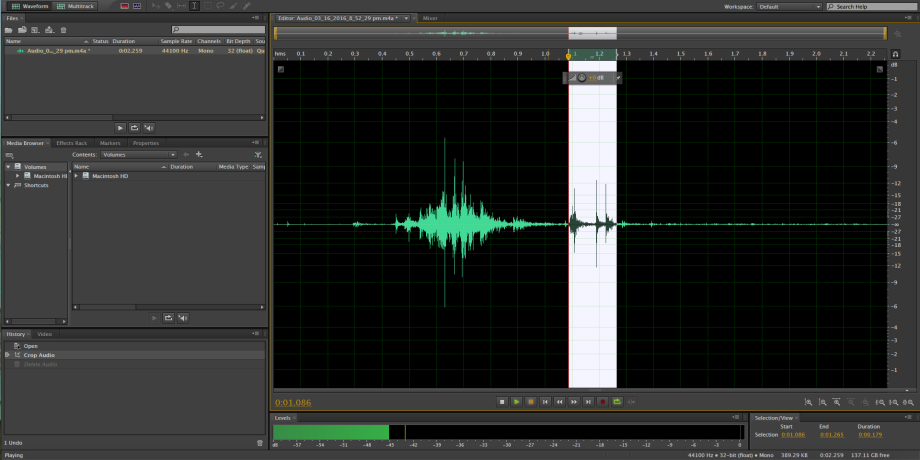
The second part was editing the levels/frequencies of my sound through the FFT filter. I found this technique to be essential when creating the ‘underwater’ effect I needed. I also managed to remove some of the crackling and general white noise I came across in my recordings;
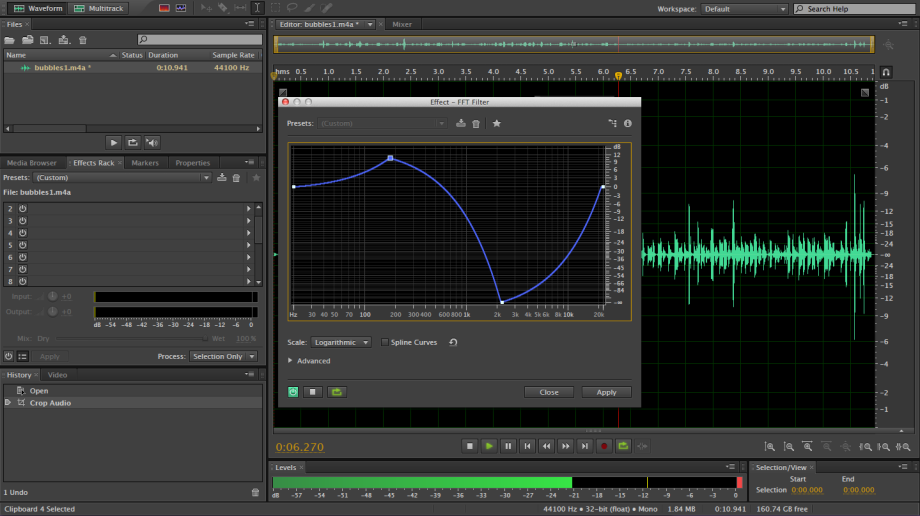
Recording Schedule
Sound Recording Schedule
(Dates and time may vary depending on weather conditions and equipment availability, and some specific sounds aren’t listed due to the impossibility/impracticality of capturing them.)

Due to the the nature of my animation, I simply don’t need many complex sound effects (save for one or two), which means I can record the majority of my sound effect audio at home with my own equipment. My animation also doesn’t feature any dialogue which removes the need for a recording studio.
Health and safety only really becomes an issue when recording the animals with large teeth, so as a precaution I aim to fit the microphone onto a 15ft pole to avoid getting to close.
Equipment Availability
A list of the equipment I require to gather the audio and visual aspect of my animation.
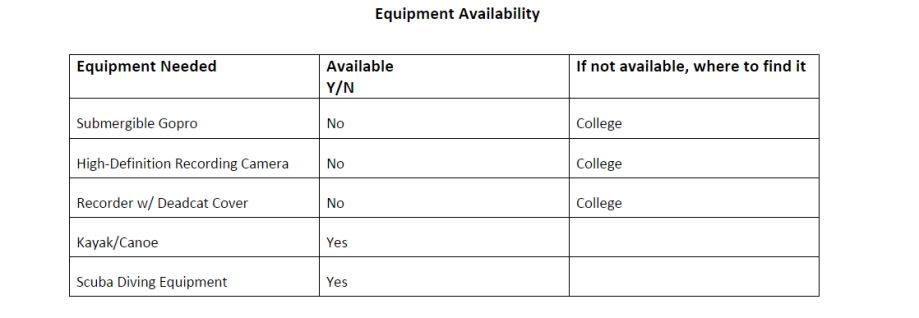
The submersible Gopro is required if only for the one scene where I need to film partially submerged shots out at sea, which is the same reason why I need to use my Kayak. The High-definition recording camera I need to capture the bulk of the live-action shots to act as backgrounds.
The recorder is simply to capture all of my sound effects, and the Deadcat/Wind Muff cover I’ll need for recording ambient sounds outdoors, such as wind and waves. With the recorder I’ll record certain sounds from my own Scuba gear to provide audio for the character and harpoon. Any other sounds such as footsteps, impacts and movement can be created without the use of any specific equipment.
Sound Map
This sound map is going to greatly assist me in my animation production. It’s a map of what sounds belong in what scene, and what music is applied. The notes at the bottom are mainly for myself remembering why I decided to add certain things, but its also to help me to figure out how the soundtrack is going to drive the narrative.
Sound Proposal
Synopsis
My animation is going to be a trailer to showcase a reboot of the game “Jaws” from 1987. The animation is going to feature an animated character exploring an live-action underwater setting filmed in an aquarium or fish tank. The idea is to showcase the gameplay elements, graphics and atmosphere that would feature in the game.
Because the game is going to be heavily based on atmosphere and exploration, creating the right audio setting is essential. Ambient sounds are going to play a key part in the game, as will a music score to enhance the experience. The music is going to help drive the narrative of the animation and provide extra setting to certain events, depending on the situation. Preferably, I’d like the music to be in time with certain aspects of the animation, to enhance the experience further.
Objective
The objective of the sound design in my animation is to provide a setting, tone and overall feel of the game. The background sounds need to be subtle and feel vast, while the sound effects need to be concise, provide information and rise above the background noise. The music score should provide context to the current situation whilst conveying a sense of narrative, changing and sweeping as the animation does. Overall, the sounds need to be second to the animation and music, only drawing attention to itself when required.
Structure
The majority of the sounds I require are easy enough to obtain and can be created in any medium-sized volume of water and recorded with an conventional microphone. However, for sounds specifically heard underwater, I’ll have to obtain from source above the surface and add an underwater filter in mixing, as I won’t have access to a hydrophone. When recording ambient sounds, I’ll need to pick the right location and time of day to ensure no unwanted audio spills over into the recording, such as the noise of cars, people and excessive wind.
Unfortunately, specific sounds like tiger growls and especially whale songs are going to be incredibly difficult to capture, so I’ll have to explore other methods to create them artificially or obtain the sounds from elsewhere.
Constraints
Any legal constraints involving copyright for sound/music can be easily avoided if I create all those myself and from scratch, however it is important to ensure that my music doesn’t mirror another track too closely, else that has the potential to spell legal action.
My animation will feature only one human character, and a character that remains completely anonymous. She is simply a diver who does not speak or have any specific race, and is there only to provide a character that the player controls. Designing a character like this means you can quite easily steer clear of any racial or sexual discrimination/stereotyping.
Visual Design
The visual design might as well be the main aspect of my project. The graphical style aims to be simple and crisp, seeming almost like miniature models when staged in front of the large live-action setting. The interactive elements of the game will follow the same art style, whilst terrain pieces and certain other objects will be photorealistic to aid in discerning what is and what is not an interactive element. The animation won’t feature any gore, (despite from being a Jaws game) so I aim for the style to appeal to all ages.
The sound on the other hand I want to feel as real as possible, as to aid immersion and engagement with the animation. I think that the use of realistic and artificial is an interesting combination that I’d like to explore.
Technical specifications
I am going to be recording all my audio digitally, simply because its going to make the preceding processes a lot easier. Were I to record in analogue, I’d have to obtain an analogue recorder (which are rare and expensive), and then find an analogue converter (also expensive) to convert my files to digital in the end anyway. Digital just seems the easier and more efficient way to go.
I aim to use a 256 bit-rate through .MP3 to process my audio recordings. 256 is a suitable balance between quality and file size. As for kHz, I aim to record at around 48 kHz as it seems to be the standard for most recorders and microphones.
I shall record all my audio in mono, specifically to give me more control over the stereo environment in mixing. Simply said, I’d like to create a stereo experience in my animation through the placement of mono sounds, so recording the initial audio in mono makes more sense. The technology I will use to record these sounds is going to be fairly standard; I plan on using a microphone to record sounds I can create indoors, and then utilise a dead-cat to eliminate wind noise when recording ambient audio that can only be captured outside.
Delivery
I plan on having my final project finished before the 18th of March, and all my sounds recorded way before that. To ensure no content is lost before the final deadline, I’m going to make great use of Google Drive to store and backup all my files, as I have done in the past. In the case of an apocolypse and all my sounds are destroyed, I can utilise the recording function on my phone to capture last-minute sounds to include in my animation.
Sound Production – Mind Map
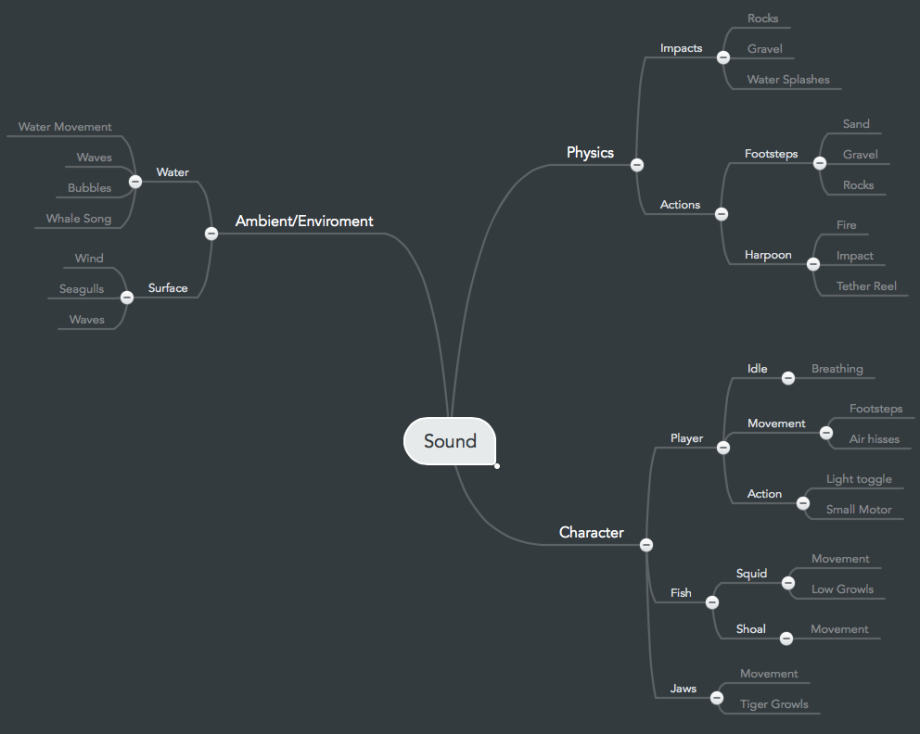
A collection of sounds that I require for my animation. There is quite a few.
Sound
What is sound? Sound is the vibration of particular matter through space. Sound will exist as long as there is matter for it to travel through, this is the reason why there is no immediate sound in space; simply because because the lack of gas removes the matter for the sound to travel through.

The structure and nature of sound can described through a waveform. A waveform is essentially the physical representation of a signal or sound through amplitude, wavelength and frequency. Different sounds have different shaped waveforms, and actual sound effects and musics have ‘complex’ waveforms, which look entirely different.
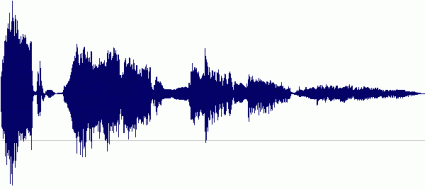

A waveform can be described using 3 different parameters; Amplitude, Frequency and lastly Wavelength.
Amplitude refers to the maximum peak of a sound wave as it oscillates through space. The greater the amplitude of the sound, the higher the volume is, and as a result amplitude is directly related to its measurement of decibels.
Frequency is used to describe the amount of waves created per-second by the sound; (one hertz is equal to one wave per-second) the higher the frequency of the sound, the higher pitch the sound is. This is because more full waves are travelling to your ear at once. If a sound has too higher or lower frequency, it may be inaudible for certain animals.
The wavelength is the space between any given point on a wave to the next one across from it, however they are normally measured from the ‘crest’ of the wave. (the highest point)
Sound is widely used in the interactive media industry, its uses as often as graphics, music an animation. For example, the most common use of sound in interactive media is that of computer games. Similar to animation, game designers have to create every sound from scratch, and create sounds that seem believable with the style of their game, and one that adheres to their environment.
Perhaps the most widely used from of interactive media is the internet. Many websites and web-browsing platforms rely on sound in order to convey information. For example, social-media sites such as Facebook and Twitter rely on small sound effects for ‘notifications’ that are often employed on mobile devices, alerting the user of new information. The same concept is used for text messages on mobile devices.
Another lesser-known use of sound in interactive media comes from film menus. The background-music and sound effects are your first impressions of the film, and are essential to creating the initial feel of the movie to come.
Decibels (db) are used to measure the perceived loudness of a sound. Decibels are related to the amplitude of a sound, so the higher the amplitude, the more decibels and the louder the sound. 5-10 decibels are among the quietest sounds we are able to hear, while anything over 130 decibels can be painful for humans.
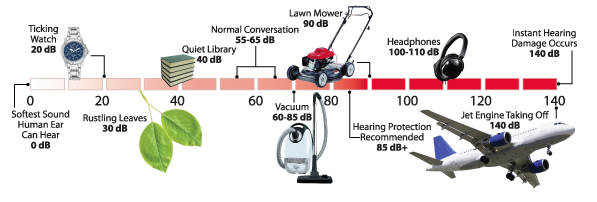
In the animal kingdom, the hearing of humans isn’t great. Under ideal conditions, humans are able to hear from 20 to 20,00 hertz (hz), and in rare cases as low as 12 hertz. This is actually fairly limited compared our fellow mammals.
The two main forms of storing audio information are Analogue and Digital. Both of these forms have pros and cons and different applications.
Analogue systems are by now mostly out of date, however even today many music producers prefer analogue over digital systems. The main difference between these two storage types is the physicality; analogue systems rely on a physical material in order to store information- analogue cameras use tape reels and music vinyls rely on large cumbersome discs.
An issue facing analogue systems is that of distortion. Analogue distortion occurs when a signal (music, sound or video) is put through a device that cannot handle the signals amplitude, and simply ‘cuts’ the signal to fit the device, resulting in the distortion of the original signal.
Digital systems are the most current forms of information storage. The main thing digital has over analogue is it’s storage. Digital information can be compressed, edited, copied and moved with extreme ease.
Digital systems also suffer from distortion, but it’s often referred to as digital ‘clipping’. Clipping occurs under similar circumstances to analogue distortion.
Sound recording and production can be a lengthy process, depending on what you aim to achieve. The initial step to sound production is the direct recording; as much as using the correct microphone is important, something often overlooked is to consider the recording location. Depending on your surrounding environment, the quality of the captured audio might degrade, and other sounds in the background might spill over onto your recording.
With the audio recorded, editing in the next step. Depending on what you want, audio format is critical. Different file formats will have different effects on your audio, as well as the final file sizes; .wav is a uncompressed file type that preserves most of the audio quality, while the .mp3 is a common compressed file type that uses less memory space.
Mixing comes next, and with this you can really get creative with your sounds. Mixing entails the editing and changing of the original audio to add or remove certain elements depending on your desired effect. Mixing includes the use of stereo, filters and sound level editing.
The final stage of sound production is the mastering and adding the audio to your animation. Editing the volume levels and syncing the sound with the actions in your animation is key to creating a believable and immersive experience. It is said that if the viewer isn’t drawn to the sound in your film, then you have applied the audio correctly.
Mono and Stereo are two different methods of delivering audio, depending on what effect you want to achieve, you may want to use one or the other. Simply put, Mono sound is when audio is projected from all speakers in the same way, while stereo sounds have 2 or more independent audio channels, creating a ‘3D’ audio experience.

The recording and storage of media can be achieved in many different ways, both with analogue and digital methods.
The most widely-used way of recording audio in the analogue age was the music vinyl, a large thin disk with grooves engraved upon it. Another popular way of recording media was through tapes, on which a sensor could read information printed onto the tape. Floppy disks and cassette tapes emerged later as a more compact alternatives to the two.
Digital recording systems are the most up-to-date and most popular method of capturing sound in the modern age. The main way of digitally capturing audio is through microphones, however, artists who work in a virtual environment will playback their track, and then the software will record the audio and convert it into a specified file type. All digital information is then stored in a hardrive, in either a phone, micro-SD card or USB stick, which leads to the main advantage of digital media being it’s portability.
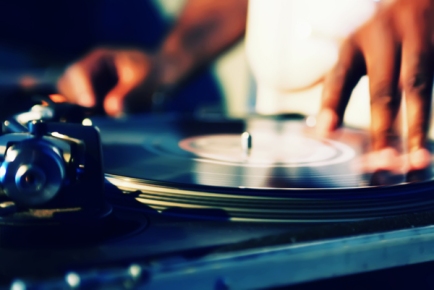
Both analogue and digital formats have their pros and cons, but in the present day digital is almost always preferred over analogue systems. The main problem with analogue from the beginning was its size, and thus portability. Analogue devices rely on large, physical material storage that are often cumbersome to transport, and provided very little storage space relative to their size. This, coupled with the general production/transportation costs of these materials saw the phasing-out of analogue in the early 21st century. However, the main advantage of analogue (and the main reason some still use them to this day) is the uncompressed raw nature of the format. Being stored on a physical material, the information doesn’t need to be compressed or distorted to fit in a hardrive, thus analgoue is capable of retaining the absolute highest quality sound.

Digital is the main format we use to record, store and play audio. Digital audio has the instant advantage of being easy to transport, and in most cases requiring no physical transport method at all with the power of the internet. Digital formats are capable of being copied, moved, edited and played all with ease, which also makes them the most versatile and flexible format. However, all this flexibility comes with an ultimate quality loss, as in order to store so much information audio files often have to be compressed to use less space (.mp3 and .ogg) and this may reduce quality. It’s also surprisingly easy to corrupt a hardrive, meaning that all the information stored on it at that time is instantly lost.
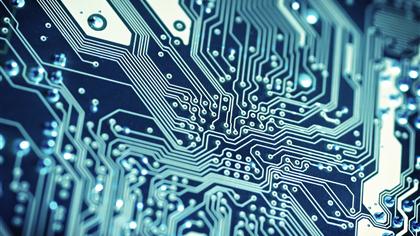
The conversion of analogue to digital was a change that eventually everyone had to embrace. This presented quite a few problems though, as digital technology had not been tuned to perfection yet. Digitising analogue audio is a process of breaking down a pure sound format into tiny bits, and then re-assembling them on the other side. This presents a problem as the original analogue audio cannot be preserved in its pure format , often resulting in undesirable effects such as audio clipping and quality loss.
The difference between raw and compressed audio formats is rather simple. Raw audio is as it says; the highest possible quality recorded audio that can be produced by the microphone/software, and compressed is audio that has had it’s file size shrunk at the expense of quality.
There are many different raw and uncompressed file formats, each serving slightly different purposes in different applications. Popular raw audio file types is are WAV, AIFF, and DAT.
WAV is a file popularly used by Windows OS, and has it’s primary use in the initial conversion of analogue to digital audio. WAV is a very lossless file type, resulting in accurate recordings and high-quality audio. However, because of the high bit-rate WAV files are significantly larger than compressed file-types.
AIFF is essentially Apple’s version of WAV, and as a result is is used on iOS, specifically iTunes. AIFF is not dissimilar to WAV, but it’s built with extra compatibility with iTunes, as the file type can contain album art and song information.
DAT is an digital storage system which records memory on a type of magnetic tape. A typical DAT device closely resembled a cassette, and can old up 180 minutes of audio. The audio is of course uncompressed and of high quality, but by todays standards is and dated obsolete.
Uncompressed audio is the most widely used audio format. This includes file formats such as MP3, OGG and WMA. These file types trade sound quality for a smaller storage space so they are most suited for portable devices.
The MP3 is the most popular format on which to store music. Despite being a compressed audio format, MP3 translates into higher bit-rate than most other compression formats, and as a result is often used in phones, iPods and other portable music players. MP3 has been repeatedly outmatched in tests with other file types that have proven to have smaller file sizes and higher bit-rates.
OGG Vorbis is an open-source and patent-free compressed audio format. OGG decreases the file size even further than MP3, and has reportedly produced better sound quality! OGG is one of the rarer formats to find and isn’t always supported in software, but popular games such as MineCraft are known to use them.
WMA is the Microsoft-made audio format that is designed to work with the ‘Windows Media’ framework, and an intended competitor to Mp3. WMA exists in several different formats, each with different characteristics, including a few lossless variations intended for professional music producers. WMA can compress audio more effectively than MP3, and is customisable to fit any connection speed or bandwidth.
Sound is an omni-important aspect in any modern media production. Depending on how sound is applied in an animation, the overall tone and feel can be altered with the inclusion (or exclusion) or certain sounds or music pieces. Sound in animation is also particularly unique, as without real physical objects, developers and animators working with a virtual space have to create the illusion of reality by creating and adding sounds themselves. Sound effects are essential because they help provide and convey physical actions where there is really no physicality at all.
Sound is often used to enhance what is already conveyed through the graphics and animation, it helps the audience connect with whats happening on the screen and creates a more believable and immersive experience.
The Application of Sound and Music in Animation
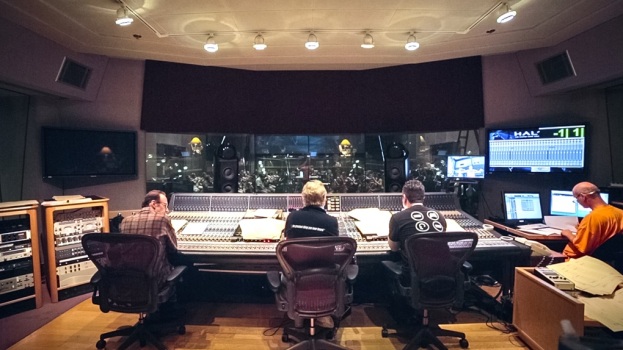
Sound and music in Animation is often considered just as important as the animation itself. Depending on how sound is applied in an film, the overall tone and feel can be altered with the inclusion (or exclusion) or certain sounds or music pieces. Professional animators and directors are often so specific about thier sound design, they often create their own sound effects and scores specifically to suit their project.
Sound in animation serves much the same purpose as it does in gaming. Without real physical objects, developers and animators working with a virtual space have to create the illusion of reality, and sound effects help provide and convey physical actions where there is really no physicality at all.

Depending on what specific sounds you use and how you use them, you can turn a project on it’s head. A professional animator doesn’t wait until the animation is finished to start thinking about sound, because without direct input from any real objects from a live-action film, the animator has to create the environment from scratch, and imagine him/herself what everything should sound like.
Does the animation require a large empty room? If so, what materials is the room made out of? If they are metallic, you’d expect sounds to echo and reverberate. A good sound designer or animator will factor in all the elements of a given environment to create a realistic and believable sound.
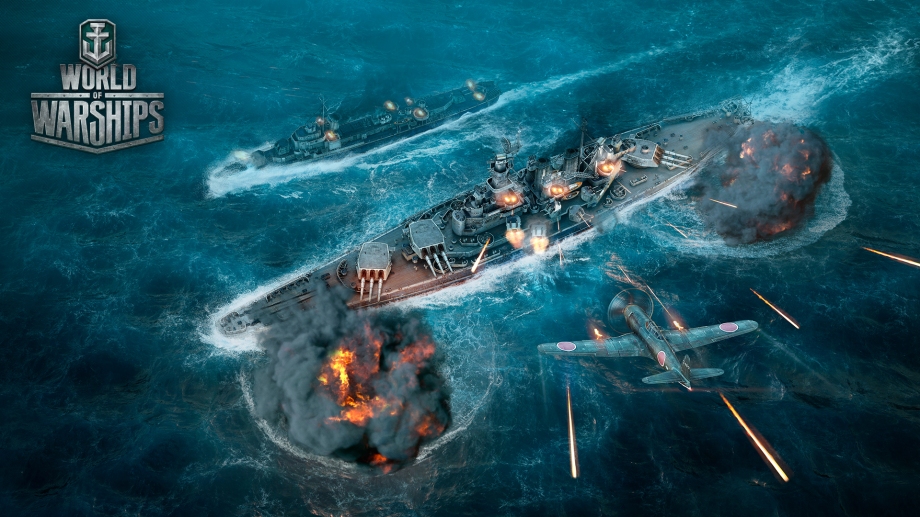
They say that sound conveys action, but music creates emotion. Grand music scores are not restricted to big-budget blockbusters anymore, and indie developers and animators have access to programs than can create whole 64-peice orchestras for their projects if they so please. Music (and sometimes the lack of) is how you create the setting and tone for your project.
Music is often used to dramatically enhance what is already conveyed through the graphics and animation. It can provide a driving force for progression, ease the player/viewer into different emotions and feelings , and provide a new layer or undertone for a given situation. Music is considered so important in the film and game industry that a surmountable portion of the project’s budget is spent on hiring the very best composers/artists.
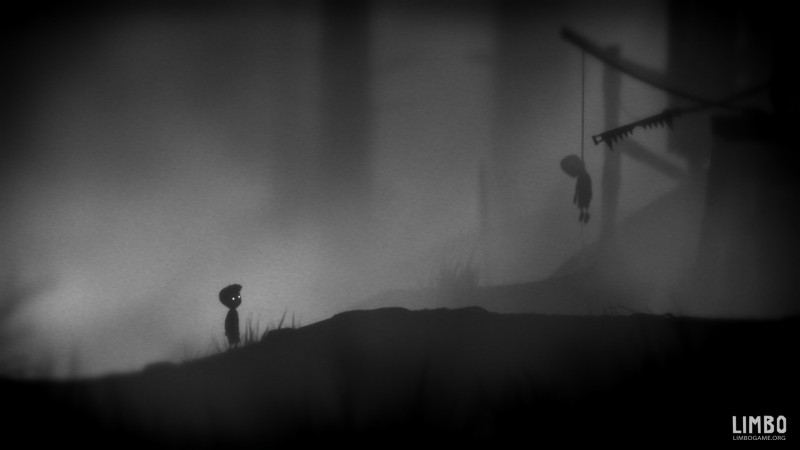
Like sound but even more importantly so, music is the key to creating the mood for your animation. Depending on what feeling you want to create in the viewer, you may end up experimenting with multiple music genres to hone the style that becomes specific to your project.
On the topic of creating atmosphere for film/animation, a fantastic use of this technique can be experienced this world-famous scene from Jurassic Park. The soundtrack starts of subtle and ominous and gradually builds in depths and volume until the reveal of the giant sauropod dinosaur. At this point the soundtrack emulates the slow, graceful movement of the dinosaur, enhancing the experience further.
This soundtrack is also immediately responsive to whats currently happening on the screen, with the soundtrack coming to the absolute front when the dinosaur stomps the ground.
Sound also plays a massive role in this scene. The dinosaurs sounds are deep, bellowing and echoing, enhancing the feeling that this creature is massive, especially when it stomps and the ground rumbles.



